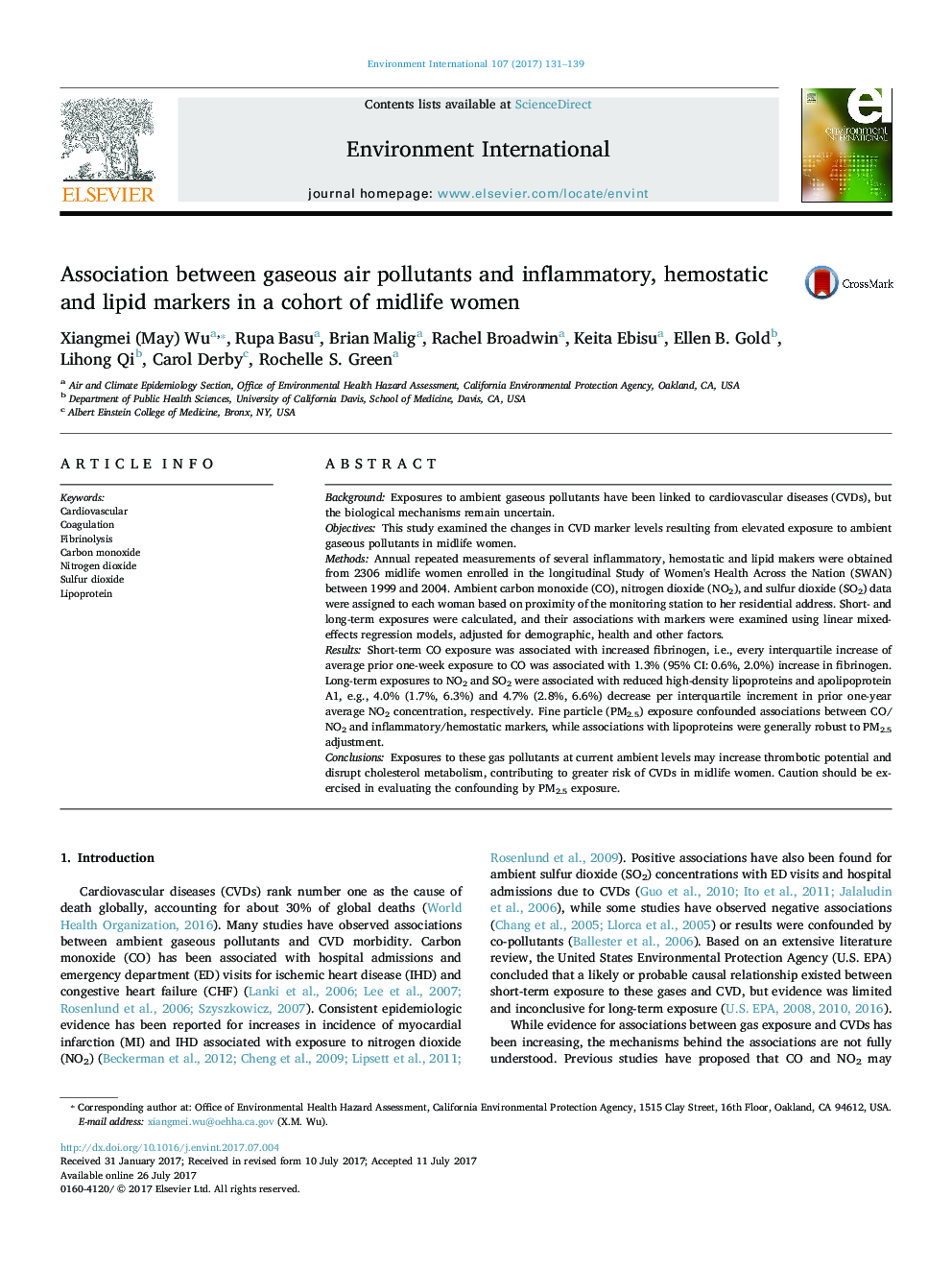| کد مقاله | کد نشریه | سال انتشار | مقاله انگلیسی | نسخه تمام متن |
|---|---|---|---|---|
| 5748310 | 1619023 | 2017 | 9 صفحه PDF | دانلود رایگان |
- We examined the associations between CVD markers and ambient gases.
- Short-term CO exposure was associated with increased levels of coagulation markers.
- Long-term exposures to NO2 and SO2 were associated with reduced HDL and APOA1.
- PM2.5 exposure confounded associations between CO/NO2 and hemostatic markers.
- Exposure to ambient gases at current NAAQS may increase CVD risks in midlife women.
BackgroundExposures to ambient gaseous pollutants have been linked to cardiovascular diseases (CVDs), but the biological mechanisms remain uncertain.ObjectivesThis study examined the changes in CVD marker levels resulting from elevated exposure to ambient gaseous pollutants in midlife women.MethodsAnnual repeated measurements of several inflammatory, hemostatic and lipid makers were obtained from 2306 midlife women enrolled in the longitudinal Study of Women's Health Across the Nation (SWAN) between 1999 and 2004. Ambient carbon monoxide (CO), nitrogen dioxide (NO2), and sulfur dioxide (SO2) data were assigned to each woman based on proximity of the monitoring station to her residential address. Short- and long-term exposures were calculated, and their associations with markers were examined using linear mixed-effects regression models, adjusted for demographic, health and other factors.ResultsShort-term CO exposure was associated with increased fibrinogen, i.e., every interquartile increase of average prior one-week exposure to CO was associated with 1.3% (95% CI: 0.6%, 2.0%) increase in fibrinogen. Long-term exposures to NO2 and SO2 were associated with reduced high-density lipoproteins and apolipoprotein A1, e.g., 4.0% (1.7%, 6.3%) and 4.7% (2.8%, 6.6%) decrease per interquartile increment in prior one-year average NO2 concentration, respectively. Fine particle (PM2.5) exposure confounded associations between CO/NO2 and inflammatory/hemostatic markers, while associations with lipoproteins were generally robust to PM2.5 adjustment.ConclusionsExposures to these gas pollutants at current ambient levels may increase thrombotic potential and disrupt cholesterol metabolism, contributing to greater risk of CVDs in midlife women. Caution should be exercised in evaluating the confounding by PM2.5 exposure.
Journal: Environment International - Volume 107, October 2017, Pages 131-139
